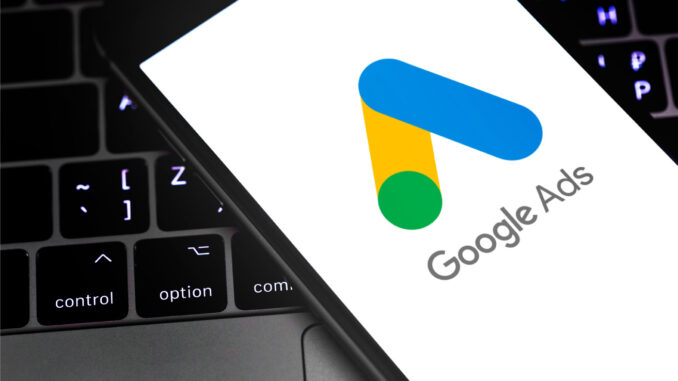
If you’re looking to gain quick leads and traffic to your website, Google Ads is the way to do it. Google Ads provides an option for every available budget and has advanced targeting options, which will get your ads in front of your target audience. If you’re not incorporating PPC into your marketing strategy, you’re neglecting a great opportunity to instantly expand your sales pipeline.
What is PPC Marketing?
PPC stands for pay-per-click, with PPC marketing you only pay when someone clicks on your ad. Every click is reported on so you can know exactly how many people are interacting with your ads and the potential ROI. This is in stark contrast to traditional out-of-home advertising, such as billboards, where it’s extremely difficult to know if potential customers are being influenced by your ad.Most websites with huge amounts of returning visitors generally have their own PPC marketing option. Reddit, Facebook, Bing, LinkedIn, and Twitter all offer the option to display PPC ads to their members.
However, the biggest of these platforms is Google Ads. It’s estimated that 5.6 billion Google searches are made every single day. Google provides the option to advertise on every single one of those searches. And that’s not all. Google also offers customers the chance to advertise on Youtube, and it’s partner network of external websites which is estimated to encompass around 90% of the entire internet.
How does Google Ads?
Google Ads works by providing more visibility to your business. It has three primary options for you to choose from:
Define Your Target Audience
One of the great things about Google Ads is it’s advanced targeting features. You can finetune your ads so that they only display to your target audience and people directly interested in your products or services!
Creating the right targeting settings will enhance your conversion rate considerably. So it’s important to take the time to think about your customer demographics and characteristics, then create ads which will appeal to that audience. Some filtering options include: demographics (gender, age, occupancy, level of education), geographical location, and also interests (food, sports, travelling, investing, etc.).
When using search ads, you can specify keywords which will trigger your ads when somebody makes a google search with that word included. For example, if your business sells football boots, you can trigger your ads to be shown for searches including the words “football boots”. When using video and display ads, you would target websites/channels related to football or sports in general to capture your audience.
Advanced Targeting Features: Remarketing
Another powerful targeting method provided by Google is remarketing. Have you ever landed on a website, clicked off it, then noticed the ads for that website appear everywhere for the next couple of weeks? That’s remarketing in action!
When used correctly it will bring visitors back to your site and convert them into leads. remarketing is best used on customers who are not yet ready to make a purchase, it reminds them that your business still exists and that your products/services are waiting for them when they’re ready.
Impressions, Clicks, and Conversion: how do you want to pay?
Google Ads caters to large and small businesses, and every budget in-between. If you’re worried about sinking too much money into the platform, don’t be, Google has you covered.
They’re 3 ways to pay for Google Ads:
The impressions option is best used for brand awareness campaigns. Typically you are charged for every 1,000 impressions. Nobody has to click on your link; they only have to look at your ad for you to be charged by Google, but don’t worry, impressions are inexpensive. If you’re a new business and your goal is to get your brand name in front of lots of people quickly, paying by impressions might be right for you.
Paying by ad clicks is the best way to generate traffic to your website. If your website is conversion rate optimised, it can be a great way to drive conversions whilst keeping the acquisition cost low. Also, bidding on keywords that your website currently isn’t ranking for organically is a great hack to expand the audience reach of your website.
The conversion payment option usually appeals the most to small business owners as the ad cost is offset by the potential sale, making it a win-win! This approach does have two drawbacks, however. Firstly, it’s the most expensive ad type to run by far. Secondly, it generates much less impressions than the other two options. If conversions is your goal we’d recommend experimenting with clicks first as it has the potential to generate a much smaller cost-per-lead.
In-depth reporting
Google Ads provides in-depth reporting so you know exactly how your money was spent and how you can improve your ads.
Depending on which payment method you have selected a cost-per impression, click, or conversion is transparently reported so you can calculate your ROI to the very last penny. Dig a little deeper and you’ll find information on which ads are performing the best.
If you notice one of your ad creatives isn’t generating clicks, discontinue this ad and focus its budget on the better performing ads. Same principle with location based ads, if one place isn’t performing as well, think about reallocating your budget.
Why use Google Ads? Because it’s an unbelievably useful sales tool which will drive leads to your business. It’s completely scalable, so long as your account is well optimised and targeting the right audience, you’ll be able to generate as many leads as you want with the right budget.
If you need help getting started on Google Ads or your account is underperforming, reach out to an expert who will get your account firing on all cylinders.
Atomic Digital Marketing can provide your business with a custom Google Ads strategy which covers:
You can trust us to manage your Google Ads account and generate the most leads at the lowest cost-per-acquisition.

Leave a Reply